Right after the war ended, I learned to fly in a Piper Cub before I went into the Air Force. I started out in Stearmans, even though they were phasing them out. They just lined us up according to height, and the shortest one-third of the guys got into Stearmans. I was happy because I wanted to fly the Stearman, and we got a lot more acrobatics than the guys in the AT-6 did. I eventually flew the P-51s at Williams Field in Phoenix, Arizona. I was 19 years old and just having a ball, and it only got better from there because they had the F-80 Shooting Stars at Williams Field. I was selected to go into a reconnaissance squadron and flew the RF-80, which was a reconnaissance version of the F-80, out at March Field in California. I actually liked recon work better than the fighters because we were flying all over the United States taking pictures. The poor fighter boys would just go to the gunnery range, shoot into the sand, and head back.

Learning to Fly a Blowtorch and Shoot a Camera
We didn’t have a T-33 dual trainer to get us ready for the F-80, so they just gave us a blindfold cockpit check. You had to know where every switch was in that F-80, then they helped you fire it up and then said, “Go.” And of course, it had a 15-to-1 boost through the hydraulic system, which we weren’t used to. Comparatively speaking, the P-51 is pretty heavy on the controls, and everybody that took off wobbled on takeoff for about five minutes and then you slowly got used to it. We flew photography missions around California, assigned to make a mosaic of a certain area. Clyde East (WW II recce P-51 ace) was a flight commander, and I was a second lieutenant when I came into the squadron. I liked him, and we called him “Hundred Percent East.” If you were on his wing on takeoff, you better not be lagging because you wouldn’t catch him. Most leads would give you a couple percent in order to play with as a wingman, but Clyde was full up on the throttle. By 1952, I had almost 400 hours of recce time flying around taking pictures. And then in 1953, I went to Korea where I received my baptism by fire.
In April of 1953, I was stationed at Kimpo, K-14, home of the 15th Tactical Reconnaissance Squadron, “The Cotton Pickers,” flying RF-80s and RF-86s. We shared our base with Aussies, flying Meteors, and the 4th Fighter Group, flying F-86s.
Denne historien er fra December 2018-utgaven av Flight Journal.
Start din 7-dagers gratis prøveperiode på Magzter GOLD for å få tilgang til tusenvis av utvalgte premiumhistorier og 9000+ magasiner og aviser.
Allerede abonnent ? Logg på
Denne historien er fra December 2018-utgaven av Flight Journal.
Start din 7-dagers gratis prøveperiode på Magzter GOLD for å få tilgang til tusenvis av utvalgte premiumhistorier og 9000+ magasiner og aviser.
Allerede abonnent? Logg på

Keeping 'em Flying!- The new generation of warbird pilots, restorers and mechanics
The new generation of warbird pilots, restorers and mechanics. Nearly 80 years after the end of World War II, the fighters, bombers, and trainers that defended freedom continue to enthrall and inspire audiences at airshows, thanks to generations of warbird pilots, maintainers, restoration specialists and collectors. In our September, 2022 issue we introduced you to the young warbird pilots, maintainers and restorers who are already beginning to displace more "experienced" warbird fliers and fixers.

The Corsair Maker- Bringing the Vought Corsair to the fleet was a daunting challenge that spanned nearly three years.
When the first production Corsairs exited the Stratford factory in June 1942, Guyton, as seen here, was tapped to manage the flight and production test program. Armament was improved to six wing-mounted .50s, displacing the wing fuel tanks now placed forward of the cockpit which necessarily was moved rearward by 32 inches. Overall length was increased, armor plate added, landing, arresting and tail gear improved, aileron control enhanced, and a new version of the R2800 engine was incorporated. But those significant improvements unearthed numerous idiosyncrasies that would take an extended period to make the Corsair acceptable for carrier operations
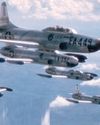
STARFIRES Over Korea
F-94 pilots tangle with MiGs
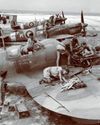
Training Mission
BY THE TIME THIS TRAINING SCENE WAS RECORDED in Canne, Italy, in July 1944, Allied Yugoslavian airmen had several years of experience working side by side with the RAF.
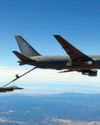
KC-46A PEGASUS
Next generation aerial refueler
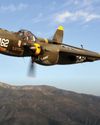
"SATAN'S ANGELS" ACE - Tales from a P-38 pilot in the South Pacific
\"AS A KID GROWING UP on the bow of my father's tugboat, hauling oil from Seattle to Alaska, I had a lot of time on my hands.
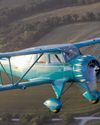
WACO YKC - Stunning and Ultra Rare Golden Age Cabin Flier
BETWEEN THE IMPLEMENTATION of the Air Commerce Act of 1926 and December 31, 1948, all U.S. registered flying machines sported an N-number, much as they do today, the \"N\" being an internationally recognized identifier for the United States. During that period, however, an additional letter-identifier followed the \"N.\" Depending on their category, they were registered in the NC (Commercial), NG (Glider), NL (Limited), NR (Restricted, usually meaning race airplanes), NS (State government), and, finally, NX (experimental).
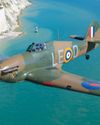
BADER'S HURRICANES
Double amputee fighter ace Douglas Bader and his Battle of Britain Hurricanes
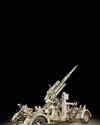
Scourge of the Allied Fighters
IT HAD TO BE THE MOST HELPLESS FEELING in the world: you're at 25,000 feet over Europe knowing that your primary function is to drop bombs-or flying escort for the bombers while being a slow-moving target for some of the world's finest shooters. However, you have John Browning's marvelous .50 caliber invention to give some degree of protection. Unfortunately, you're absolutely helpless against flak. Piloting and gunnery skills play no role in a game where sheer chance makes life and death decisions. For that reason, the Krupp 88 mm Flak 18/36/37 AA cannon could be considered WW II's ultimate stealth fighter. You never saw it coming.
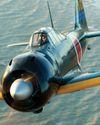
ZERO MYTH, MYSTERY, AND FACT
A test pilot compares the A6M5 Zero to U.S. fighters